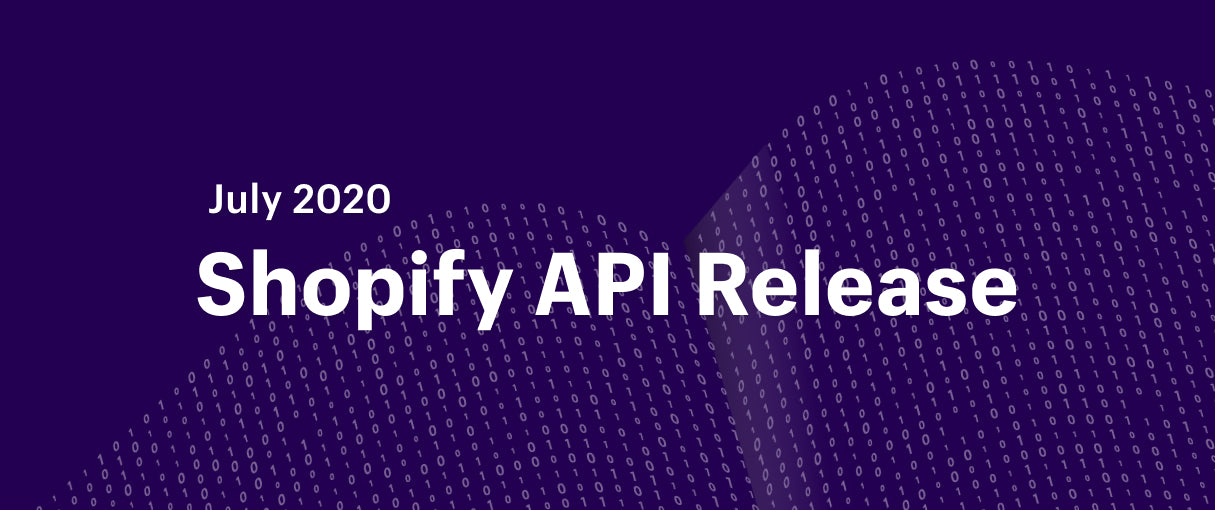Welcome to the July 2020 edition of our API features roundup, designed to help you understand how all the changes of our latest API release can be adopted to improve the quality of your apps and your development experience.
This month, we focus on many quality of life improvements to the Admin API, and additions that level up the experience for international merchants. The 2020-07 launch also coincides with the removal of versions 2019-04 and 2019-07, so remember to check your API health report to make sure that you're compatible.
Let's get started by jumping into the quality of life improvements that version 2020-07 brings to the Shopify API.
Table of contents
Released as part of 2020-07
Below are the features included in the 2020-07 release.
1. AWS EventBridge support
You can now use Amazon EventBridge to receive webhook events from a shop. Scaling to accept webhook traffic directly from Shopify can be difficult, especially if a large shop uses your app during flash sales. Our EventBridge integration allows you to directly pipe event data into AWS, and forwards it to SQS or a Lambda for processing.
Shopify’s EventBridge integration is a highly scalable and resilient solution that will help you dependably accept more webhook traffic, without having to manage the complexity of a queueing system.
Learn how to set up Shopify's AWS Eventbridge integration in the video below.
For more information on how to start managing your Shopify webhooks with AWS EventBridge, visit our documentation.
2. Annual charges with the GraphQL Billing API
In the past, offering annual plans with the Billing API has required a variety of workarounds. Apps would commonly use "single-use" charges, created (and approved by merchants) once per year. This approach had a lot of drawbacks, especially when concerning upgrades and re-approval of charges.
As of version 2020-07, the Billing API has support for annual charges, including prorated upgrades and automatic renewal. Use the appSubscriptionCreate mutation to create a charge while specifying interval: ANNUAL, and Shopify will bill annually.
Below is an example of a mutation to create an annual charge:
For more information on annual charges, including how to migrate existing annual subscriptions, visit our documentation.
You might also like: The Shopify GraphQL Learning Kit.
3. Localization extensions
In some locales, additional information needs to be collected at checkout to comply with governmental regulations. Shopify now supports this information's entry and exposes the relevant details through the Order API.
For example, let's look at Brazil, the first locale with support for localization extensions. Proper government invoicing requires a valid Brazilian CPF number at checkout. In the past, inventive store owners sometimes collected the CPF number through the "Company" field, but now a dedicated field is available at checkout to obtain the CPF.

The information entered into this field is then available through the localizationExtensions connection on the order, as shown below :
This extension opens the doors for many country-specific fields to be added for other locales in the future.
To learn more about getting tax IDs using localization extensions, visit our documentation.
4. Improved access errors in GraphQL
Access errors in GraphQL are now much more descriptive, and return information about why your request failed, rather than just saying “access denied.” Responses will now include extensions, which consist of an error code, link to necessary documentation, and the name of the required access scope.
Before:
After:
You might also like: The Essential List of Resources for Shopify App Development.
2019-04 and 2019-07 version removal
Due to the versioning schedule changes discussed in our How Shopify Partners are Responding to COVID-19 blog post, both 2019-04 and 2019-07 versions have been sunset with the release of 2020-07.
To resolve any outstanding compatibility concerns, make sure to take a look at the API health report on the app index on your Partner Dashboard. For support on migrating your app, visit our community forums, where other partners and Shopify employees are available to help.
Stay on top of changes
For all changes to the Shopify platform, make sure to subscribe to the Developer Changelog, the primary source of information for all new product launches. Stay up to date using the changelog, and stay ahead of the curve by adopting new features as soon as they’re shipped into the upcoming 2020-10 release candidate.
You can also subscribe to What’s New for Shopify Partners, our monthly product email, via the link below.









